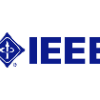With recent advancements, the wireless local area network (WLAN) or wireless fidelity (Wi-Fi) technology has been successfully utilized to realize sensing functionalities such as detection, localization, and recognition. However, the WLANs standards are developed mainly for the purpose of communication, and thus may not be able to meet the stringent requirements for emerging sensing applications. To resolve this issue, a new Task Group (TG), namely IEEE 802.11bf, has been established by the IEEE 802.11 working group, with the objective of creating a new amendment to the WLAN standard to meet advanced sensing requirements while minimizing the effect on communications. This paper provides a comprehensive overview on the up-to-date efforts in the IEEE 802.11bf TG. First, we introduce the definition of the 802.11bf amendment and its formation and standardization timeline. Next, we discuss the WLAN sensing use cases with the corresponding key performance indicator (KPI) requirements. After reviewing previous WLAN sensing research based on communication-oriented WLAN standards, we identify their limitations and underscore the practical need for the new sensing-oriented amendment in 802.11bf. Furthermore, we discuss the WLAN sensing framework and procedure used for measurement acquisition, by considering both sensing at sub-7GHz and directional multi-gigabit (DMG) sensing at 60 GHz, respectively, and address their shared features, similarities, and differences. In addition, we present various candidate technical features for IEEE 802.11bf, including waveform/sequence design, feedback types, as well as quantization and compression techniques. We also describe the methodologies and the channel modeling used by the IEEE 802.11bf TG for evaluation. Finally, we discuss the challenges and future research directions to motivate more research endeavors towards this field in details.
翻译:暂无翻译




